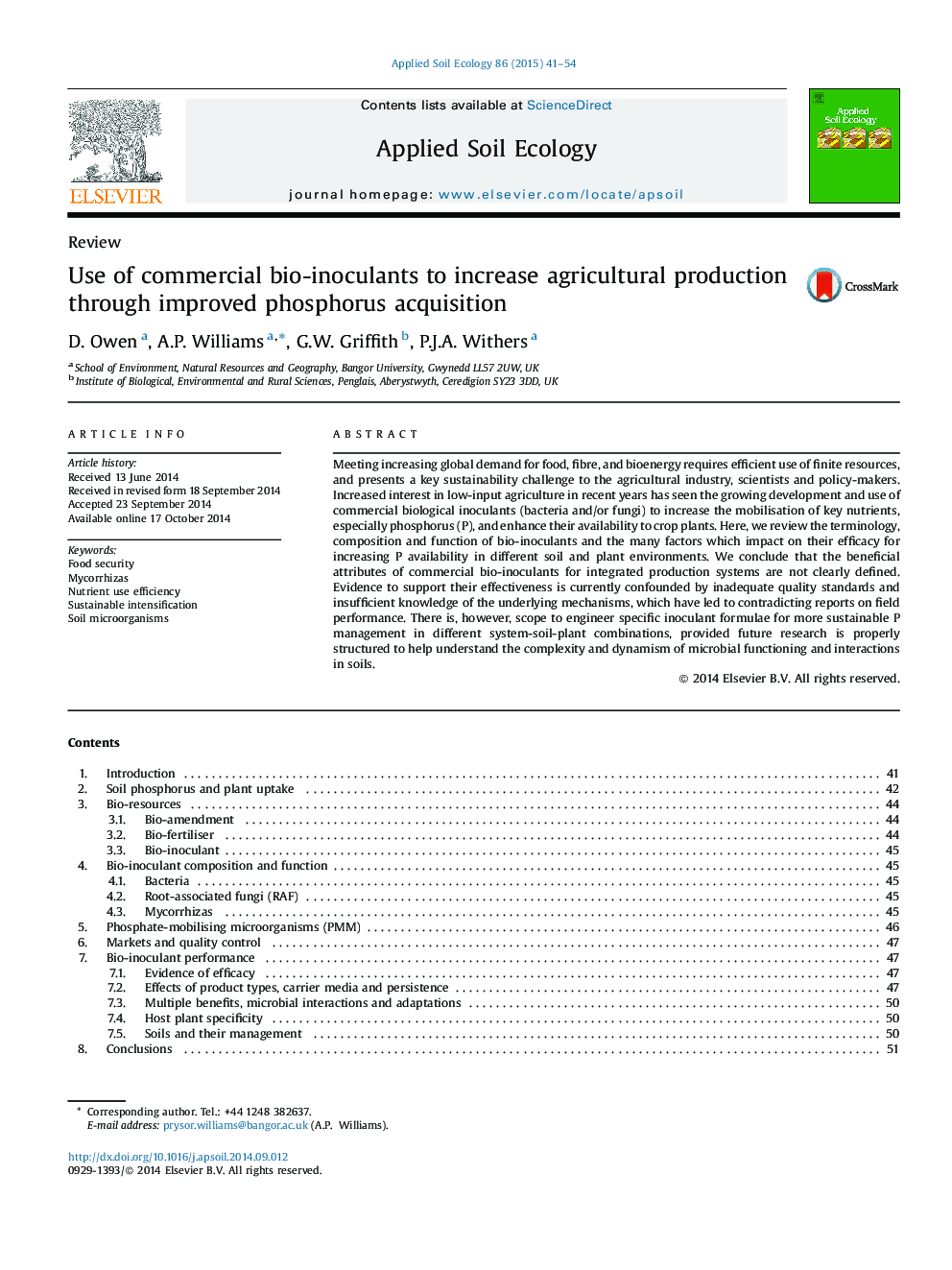| Article ID | Journal | Published Year | Pages | File Type |
|---|---|---|---|---|
| 4382109 | Applied Soil Ecology | 2015 | 14 Pages |
•We review the use of commercial bio-inoculants to increase plant uptake of phosphorus.•We examine microorganisms found within such bio-inoculants and their mode of action.•We propose a re-order of nomenclature to clarify the typology of bio-inoculants.•We conclude that the beneficial attributes of commercial bio-inoculants are unclear.•However, bio-inoculants could contribute to sustainable food production systems.
Meeting increasing global demand for food, fibre, and bioenergy requires efficient use of finite resources, and presents a key sustainability challenge to the agricultural industry, scientists and policy-makers. Increased interest in low-input agriculture in recent years has seen the growing development and use of commercial biological inoculants (bacteria and/or fungi) to increase the mobilisation of key nutrients, especially phosphorus (P), and enhance their availability to crop plants. Here, we review the terminology, composition and function of bio-inoculants and the many factors which impact on their efficacy for increasing P availability in different soil and plant environments. We conclude that the beneficial attributes of commercial bio-inoculants for integrated production systems are not clearly defined. Evidence to support their effectiveness is currently confounded by inadequate quality standards and insufficient knowledge of the underlying mechanisms, which have led to contradicting reports on field performance. There is, however, scope to engineer specific inoculant formulae for more sustainable P management in different system-soil-plant combinations, provided future research is properly structured to help understand the complexity and dynamism of microbial functioning and interactions in soils.
